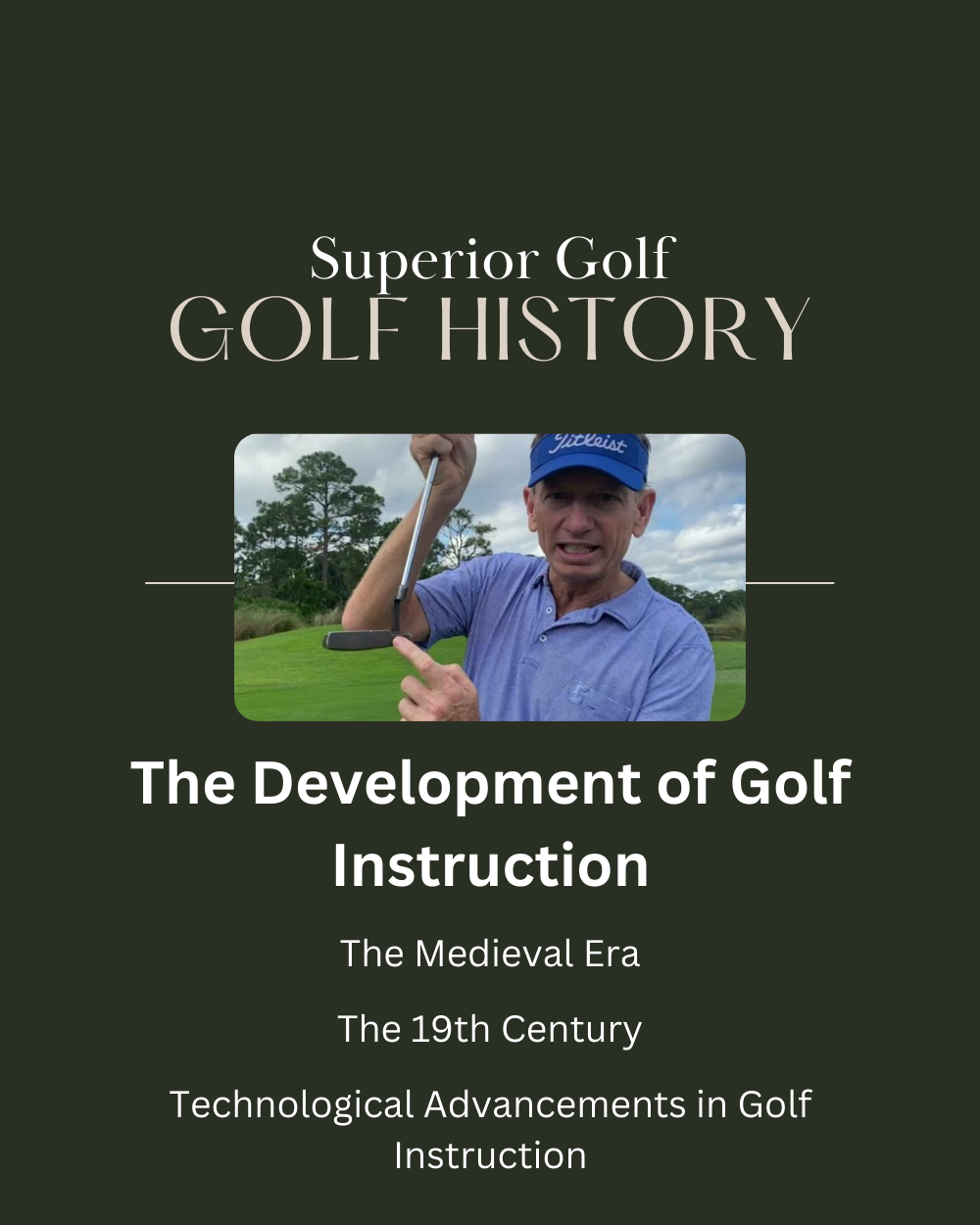The Development of Golf Instruction: Golf teaching has a long history, starting in the medieval era. The game changed a lot when players started to take a second uninterrupted shot. This made golf more than just a simple game. It became a complex and strategic sport. Golf got so popular in Scotland, it was banned for a while. The reason was it distracted from national defense efforts.
The 19th century brought a big change with the introduction of the gutta percha ball. This allowed golf to spread worldwide. It also led to the first formal lessons by hiring full-time golf teachers. Then came the Haskell ball. Famous golfers like Harry Vardon influenced the game a lot. He was known for his unique swing and winning many tournaments.
Golf teaching kept evolving in the 20th century with new techniques like straight-line putting and the modern sand wedge. Local and club-level lessons became popular. This was thanks to former touring pros sharing their skills. TV broadcasts of golf and bigger tournament prizes made more people interested in the game. From that point, golf teaching has become very detailed. Today, it includes using customized clubs, focusing on mental skills, and improving physical fitness for better performance1.
Key Takeaways
- The adoption of the second uninterrupted shot principle marked a pivotal shift in the medieval era.
- The introduction of the gutta percha ball in the 19th century revolutionized golf instruction.
- Touring pros like Harry Vardon set standards with innovative techniques in the early 20th century.
- Technological advancements in the mid-20th century further evolved golf teaching methods.
- 21st-century instruction now includes personalized club fitting and mental performance development.
Historical Evolution of Golf Instruction
Golf instruction has a long history that goes hand in hand with the game’s development. It all started in medieval times when the game’s strategies were first formed. This evolution went on into the modern era where teaching uses high-tech data.
The Medieval Era
The journey of golf teaching began no later than 1353. This era marked the recognition of strategies such as the second shot2. These tactics made golf different from other sports and paved the way for its future.
Golf became very popular in Scotland, but it was once banned. This was because it distracted from archery practice. It shows golf’s deep roots and innovations in coaching back then2.
The 19th Century
The 19th century was crucial for golf teaching. The introduction of the guttie ball in 1848 made the game more popular. It spread from Scotland to other countries by 18652.
In 1857, “A Keen Hand” by H. B. Farnie was the first book on golf instruction. It showed a move towards formal training2. This time also started debates on playing techniques, leading to today’s teaching methods.
The 20th Century
Early in the 20th century, golfers like Harry Vardon popularized the overlapping grip. This changed how golf was taught2. Golf magazines and professional associations started, spreading new teaching methods2.
The 1950s saw a boom in golf thanks to TV, increasing prize money and fame for players2. Universities began offering golf courses, producing stars like Arnold Palmer2. Despite the Great Depression, local and club-level teaching got better2.
The way golf is taught has been shaped by strategy, tech, and education over the years. This continues to influence how the game is played and taught today.
Technological Advancements in Golf Instruction
Golf teaching has changed a lot because of new technology. Slow-motion video tech first showed up in the 1980s3. It let coaches see a golf swing clearly to find and fix mistakes. Now, body motion sensors give detailed data on a player’s movements3.
Video and Motion Analysis
With better video tech, coaches can now deeply analyze swings4. Golf centers use this tech to give real measurements and analytics. This helps players work on improving their swing3. Software apps further customize the learning, adding to a rich training experience4. Systems that analyze putting strokes also help players get better4.
Trackman and Data-Driven Instruction
TrackMan has changed coaching to focus more on data3. It looks at club movement to find swing issues. Gadgets like the Garmin Approach R10 and FlightScope Mevo+ make this tech available to all golfers, costing between $600 to $5,0005. Coaches also use social media for virtual lessons, showing how it’s part of today’s golf coaching5.
Swing Catalyst and Force Plates
The Swing Catalyst uses sensors to study body movement3. This shows how to use the ground for more power. It costs $3,500 with V1 + BodyTrak, providing deep swing analysis6. Golf simulators add to this with a real golf feeling and precise ball tracking, enriching coaching even more4.
FAQ
What is the origin of golf instruction?
How did golf instruction evolve in the 19th century?
Who were some famous instructors that shaped early 20th century golf?
How did technological advancements impact golf instruction?
What role did video analysis play in golf instruction?
What is Trackman technology and how has it influenced golf teaching?
What innovations did the Swing Catalyst introduce to golf instruction?
How has the integration of tools like GEARS affected golf coaching?
How have teaching methods evolved with technological advancements?
Why was golf once banned in Scotland during the medieval era?
Source Links
- https://en.wikipedia.org/wiki/Golf_instruction
- http://www.golf-information.info/history-of-golf-instruction.html
- https://collegeofgolf.keiseruniversity.edu/the-role-of-technology-in-modern-golf-instruction/
- https://thegolfrooms.com/the-role-of-technology-in-golf-lessons
- https://www.lightspeedhq.com/blog/golf-technology-tools-for-teaching-pros/
- https://www.golfdigest.com/story/7-new-ways-golf-instruction-is-embracing-artificial-intelligence-and-innovative-technology

